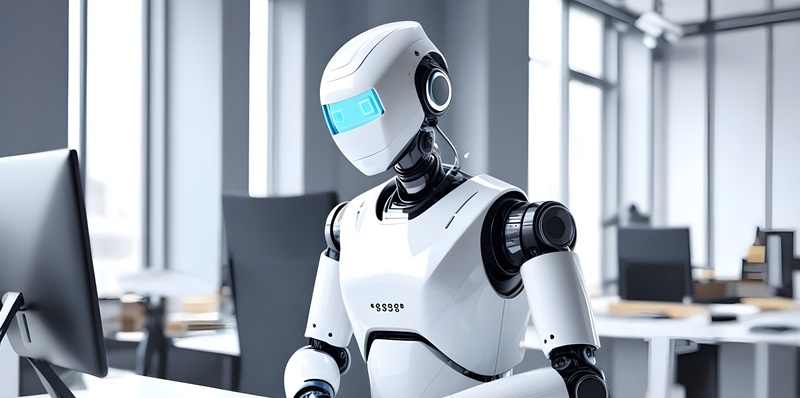As the year 2024 draws near, the buzz around Intelligent Automation (IA) and Robotic Process Automation (RPA) is growing louder. Experts, along with industry reports and customer feedback, are signaling a transformative shift in the way businesses will operate. These cutting-edge technologies are anticipated to markedly improve not only the efficiency of businesses but also redefine customer experiences and overhaul operational methodologies.
IA and RPA are expected to streamline operations, eliminate repetitive tasks, and facilitate enhanced decision-making processes. The automation of mundane tasks will allow human employees to focus on more strategic activities, driving innovation and growth. Moreover, enhanced accuracy and faster turnaround times will elevate the standard of customer service, providing a seamless experience that keeps pace with the high expectations of today’s consumers.
In summary, the integration of IA and RPA into business processes is on the cusp of changing the corporate world. The synergy of these tools promises a future of hyper-efficiency and sophisticated operational strategies, and as we approach 2024, organizations are eagerly awaiting to embrace the full potential of these technological advancements.
The Convergence of Technology for Strategic Transformation
The Integration of Generative AI, Automation, and Task Mining
The fusion of generative AI, automation, and task mining is revolutionizing business operations, offering advancements in economic efficiency and addressing ESG (Environmental, Social, and Governance) goals. As generative AI progresses, it becomes a game-changer in data analysis and task mining, underpinning more informed decision-making and enhancing strategic planning. This innovation pushes companies to evolve their approach in scenario modeling, trend analysis, and predicting future outcomes. Such integrated intelligence not only optimizes processes but also aligns business practices with sustainability and responsible governance. As the corporate world embraces this shift, the potential for improved accuracy in forecasting and strategic insight is immense, setting the stage for a smarter, more conscientious business environment.
Democratizing Automation through Citizen Development
Generative AI is revolutionizing citizen development, particularly through its enhanced natural language processing capabilities. In simpler terms, everyday users without specialized skills will soon have the tools they need to build and implement automation technologies. This shift is particularly noteworthy in the Asia Pacific, where such democratized tech is being rapidly embraced.
The rise of citizen developers means that a wider and more varied group of business professionals can now engage in constructing automation scripts. This wave of participation is set to drive innovation and efficiency across diverse industries.
Thanks to generative AI’s advancements, the barriers to digital transformation are being lowered, allowing for more inclusive participation in the tech revolution. As a result of these trends, enterprises can expect a significant boost in their automation efforts, with contributions from a broader base of talent.
Enhancing User Experience and Strategic Planning
User Experience at the Forefront of Automation
In today’s competitive market, businesses are zeroing in on enhancing the user experience within their automation frameworks. As operational and R&D budgets get leaner, companies understand the imperative to create user-friendly and accessible interfaces. These interfaces streamline the end-user interaction, reduce complications, and encourage wider acceptance of automated systems. The knock-on effect of improved user interfaces is clear—increased adoption rates lead to a greater return on investment in automation technologies.
Forward-thinking companies are embedding user experience as a key component in their automation agendas. By doing so, they aim to stay ahead of the competition and remain significant in their respective sectors. As user experience becomes an integral part of the automation equation, businesses are realizing it’s not just about the technology itself but also how seamlessly people can interact with it. Such strategic integration of user experience is critical for companies aiming to maximize the efficiency and effectiveness of their automation efforts.
The Evolution of Process Orchestration and Planning
As businesses delve into the nuances of Intelligent Automation (IA) and Robotic Process Automation (RPA), they recognize the vital role of meticulous orchestration and calculated planning. The focus has shifted to more than just adoption of automation technologies. Companies are now pursuing a strategic approach to their automation initiatives, aiming for seamless integration into their long-term objectives. This involves establishing clear goals, determining measurable outcomes, and ensuring that automation aligns with broader business strategies. The preparation for automation is now just as critical as the implementation, signaling a new era of thoughtfulness in the application of IA and RPA. By doing so, they can better ensure that their investments yield real, sustainable benefits that propel business performance and competitive advantage forward.
Ensuring Privacy and Governance in Automation
The Growing Importance of Privacy and AI Governance
The rising dominance of generative AI and the widespread adoption of citizen development are thrusting privacy and AI oversight to the forefront of business concerns. As regulators worldwide intensify their scrutiny of AI deployments, companies are proactively enhancing their governance frameworks. Confronted with the dual need to adhere to rigorous data protection laws and maximize the transformative potential of AI and Robotic Process Automation (RPA), IT and compliance sectors are intensifying their strategies. This acceleration ensures that sensitive data remains secure while exploiting the efficiency gains that these advanced technologies offer. This pivotal balance seeks to harness the full prowess of AI applications without compromising compliance or agility in an increasingly regulated digital landscape.
Human Intervention in AI and Automation Workflows
As the workplace evolves, ‘robocolleagues’—artificial intelligence and robots—work increasingly alongside humans, creating a new kind of synergy. Even so, human supervision is crucial. The key is finding the right balance between AI’s autonomous capabilities and the nuanced decision-making of human workers. Industry experts advocate for structured systems to oversee and regulate AI-enhanced workflows. Such oversight ensures that while companies enjoy improved efficiency through AI integration, they also maintain crucial elements of accountability and integrity. This human-AI collaboration, if managed well, promises to enhance productivity while preserving the essential human touch that underpins successful business operations. This partnership, thoughtfully implemented, could result in unprecedented progress and innovation across various sectors.
The Future Trajectory of IA and RPA Vendors
Unified Interfaces and Comprehensive Suites
Intelligent Automation (IA) vendors are progressively focusing on creating more streamlined and intuitive interfaces for their products. This move is particularly aimed at ensuring that even those without extensive technical backgrounds can navigate and leverage these systems effectively. As the industry hurtles toward 2024, the emphasis on user-centric design will likely become a crucial differentiator for companies seeking competitive advantage.
In response to the growing need for simplicity in automation, vendors are not only refining individual interfaces but also integrating various tools to form all-encompassing suites. This holistic approach reflects an understanding of the need for interconnected, strategic automation solutions that span multiple business operations, making it easier for organizations to adopt and implement IA on a wide scale.
This trend towards unified, accessible platforms is a testimony to the evolving landscape of automation where ease of use becomes as paramount as the technology itself. IA providers who prioritize these aspects in their product development are setting the stage for a future where advanced automation is the norm across industries, and the barriers to entry are significantly lowered.
Cloud-Native Platforms and the Role of APIs
In today’s automation landscape, cloud-native platforms are becoming indispensable, as they offer the scalability and adaptability essential to modern businesses. At the core of cloud-based ecosystems, APIs are crucial, acting as integral links that bond diverse services and components into a cohesive whole. These APIs underscore the importance of interoperability, especially in this era where intelligent automation (IA) and robotic process automation (RPA) are at the forefront. The ability to seamlessly integrate various applications and systems is key, as it enables organizations to customize their digital workforce efficiently and ensures prompt responsiveness to dynamic business needs. The focus on interoperability through APIs empowers companies to craft highly effective digital strategies, leveraging the best cloud-native features to foster innovation and drive greater value from their automation investments.
Process Orchestration and the Shift in Perspective
The Advancement of No-Code Approaches
The no-code movement is gaining momentum and reshaping the IT landscape. This revolution allows departments to adapt quickly, blending old and new tech systems seamlessly. With no-code platforms, the face of IT is changing; ‘citizen developers’—non-technical staff—are stepping up, using intuitive interfaces to build applications without traditional coding knowledge. This shift is more than just about speed; it’s about empowerment and participation across all levels of an organization. As no-code tools become more embedded in work processes, companies are discovering new ways to address problems and promote innovation from within. This evolution necessitates a redefinition of IT roles, as collaboration and creativity take center stage in a field once dominated by specialists. By enabling a broader range of individuals to contribute to the digital workflow, no-code is democratizing the creation and use of software, making it inclusive and more aligned with rapid business needs.
Security and Customer Journey Experiences
As organizations grapple with increasing data and stringent regulatory requirements, they’re integrating stronger security measures into their automation strategies. This ensures that sensitive data remains protected while processes are streamlined. Moreover, the business focus is expanding. Beyond improving internal operations, there’s a growing recognition of the importance of the customer experience. This shift is driving businesses to rethink and realign their strategies accordingly. Now, customer-centric experiences aren’t just an afterthought; they’re central to gaining a competitive edge.
By placing the customer at the heart of their approach, companies are not just enhancing satisfaction but also nurturing loyalty and trust. This dual focus on secure automation and customer-oriented initiatives is not a mere trend but a strategic imperative for sustainable success in the modern marketplace. As such, businesses are actively adapting, ensuring they provide both security in their processes and exceptional experiences to their customers.


